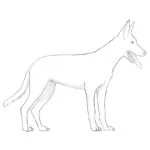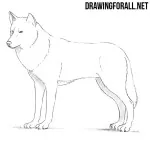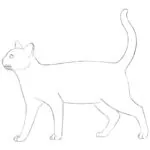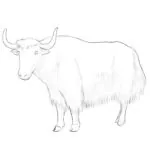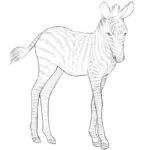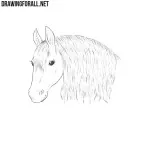How to Draw a Zebra
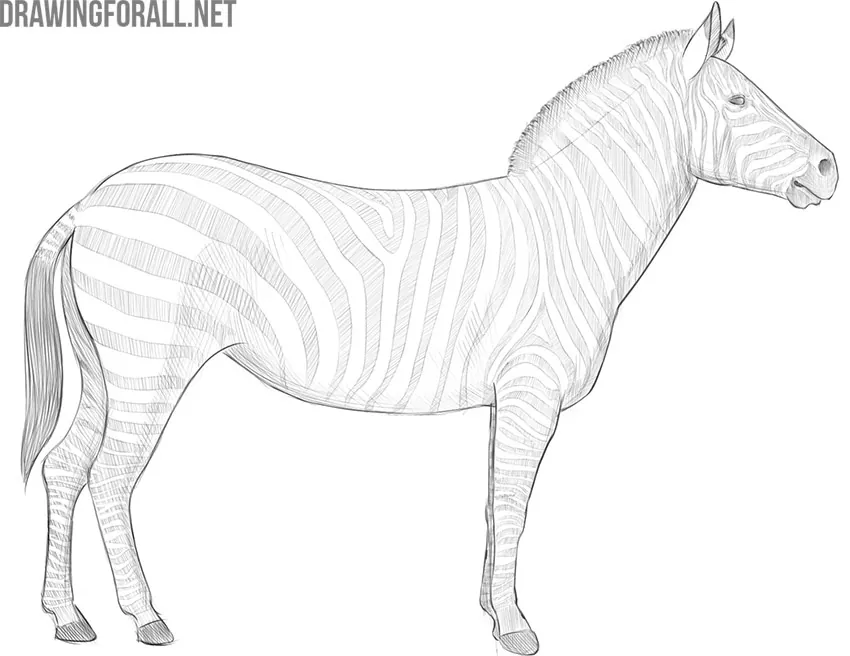
In this drawing tutorial, we will show you how to draw a zebra – a breed of wild horse that looks very much like a donkey.
Since outwardly a zebra is very similar to a donkey horse, it is drawn in a very similar way. That is, if you know how to draw a zebra, you can easily draw other animals similar to it.
Step 1
Start drawing a zebra by sketching the head, ribcage, and pelvis as circles. Next, draw out the limbs in the form of simple lines. In this step, it is necessary to draw out the main parts of the body with very general and rough lines and arrange the future drawing of the zebra on paper.
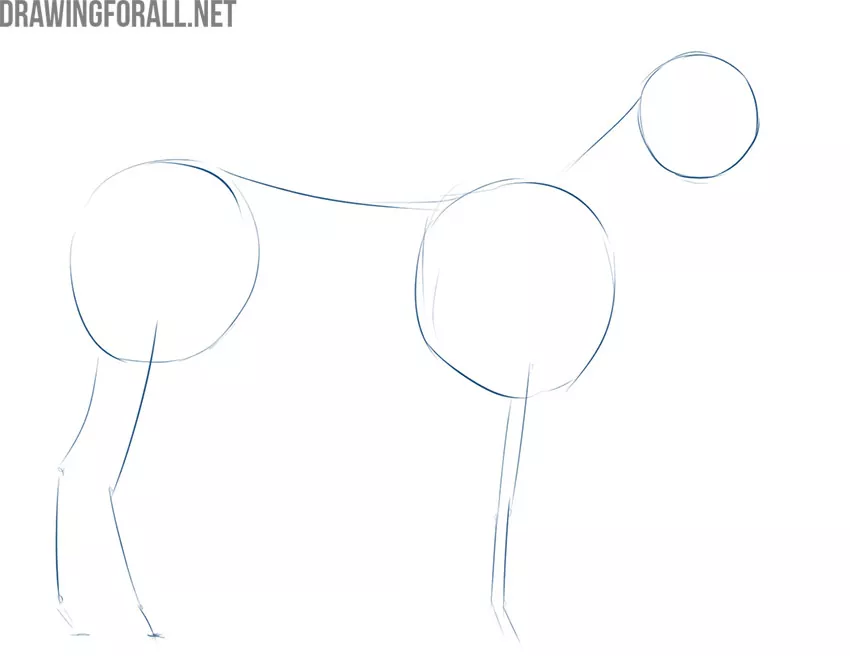
Step 2
Now use a few lines to sketch out the zebra’s face. The muzzle should taper smoothly towards the end. Next, use a pair of curved, flowing lines to draw out the zebra’s neck. It should expand smoothly from the head to the chest.
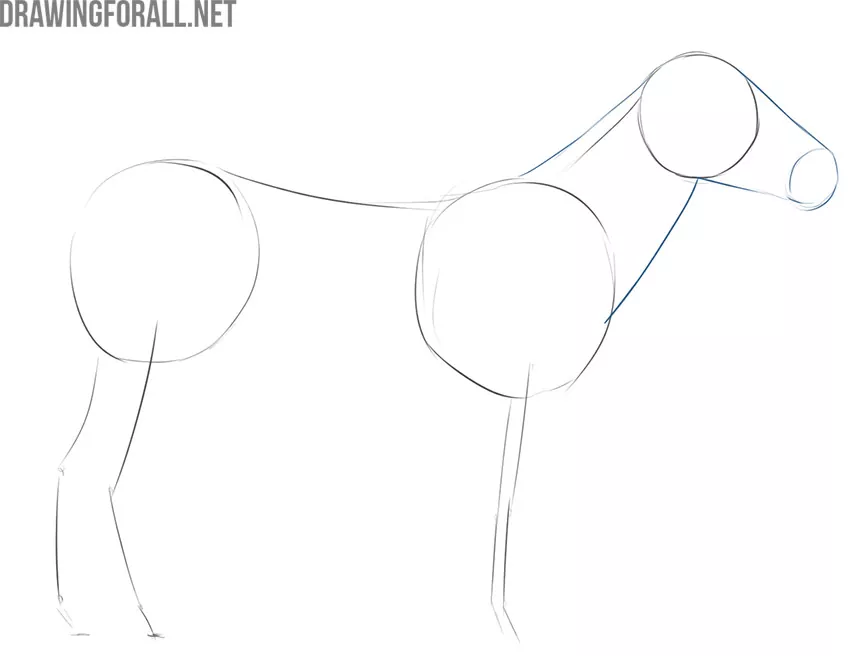
Step 3
Now go to the front legs of the zebra and outline the volume using simple geometric shapes. The upper and lower parts of the legs look like cylinders, and the ligaments look like balls. At the very bottom of the legs, sketch out the hooves with a few short lines.
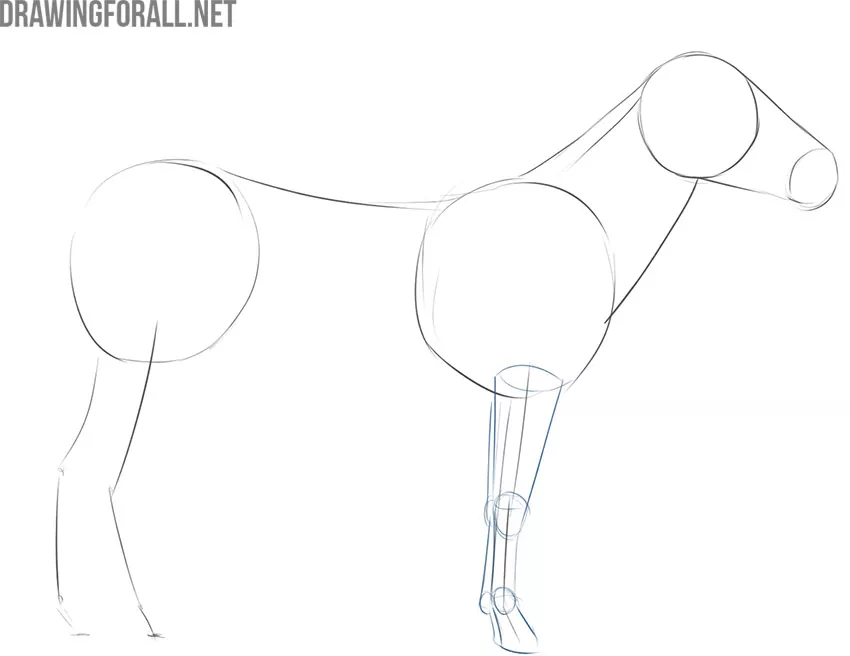
Step 4
Next, go to the hind legs of the zebra, sketching the volume on them, as in the example of how you drew volume on the front legs. Note that the hind legs are noticeably thicker at the top, and taper smoothly towards the middle. Draw the zebra’s tail with a pair of smooth, curved lines.
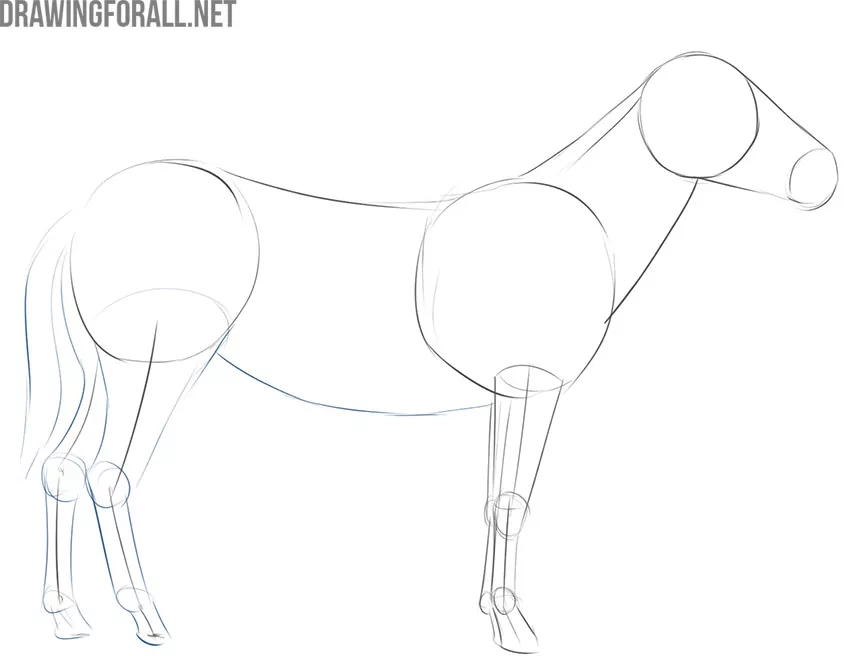
Step 5
Now let’s draw the details of the zebra’s face. Start with the eye, drawing its outlines and the folds around it. Next, go up and draw the ears. Move to the tip of the muzzle and sketch out the mouth and large nostril. The folds around the nostrils and mouth will give your zebra drawing a more natural look.
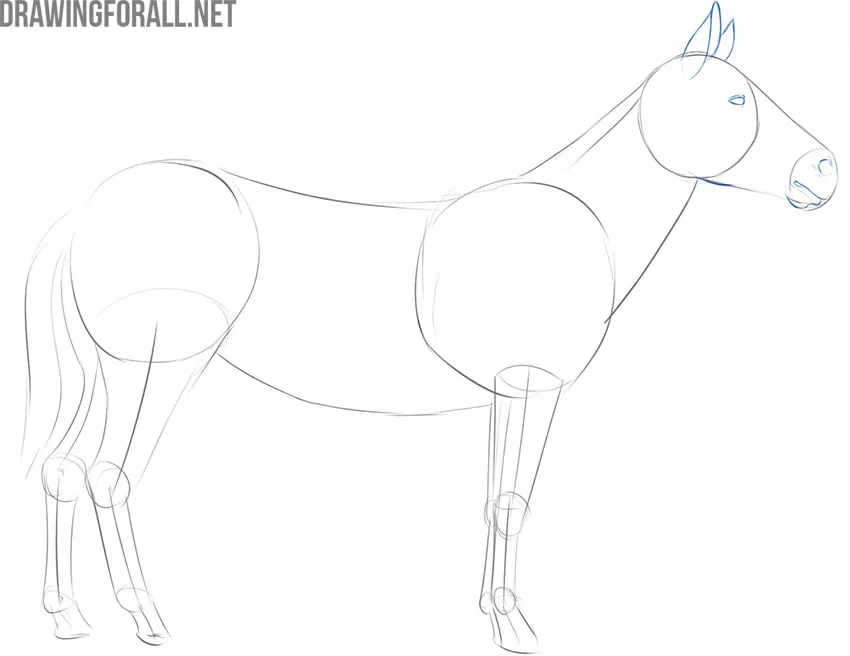
Step 6
Using lots of very short lines draw the zebra’s mane. Unlike the soft mane of a horse, a zebra’s mane is more like a stiff brush. Now go to the torso of the zebra and draw the outlines of the chest just below the neck. Do not forget to constantly compare the parts of your zebra drawing and look at it from a distance in order to find all mistakes in a timely manner.
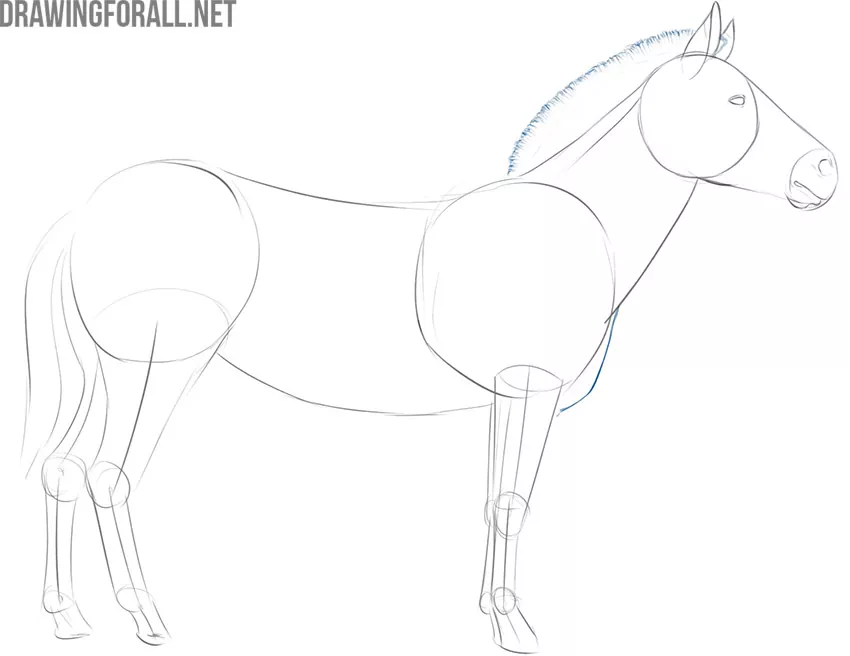
Step 7
Use a couple of long and flowing lines to give the zebra’s torso a more finished look. Now using finished lines carefully draw the front legs of the zebra, considering the outlines of the muscles and ligaments under the skin.
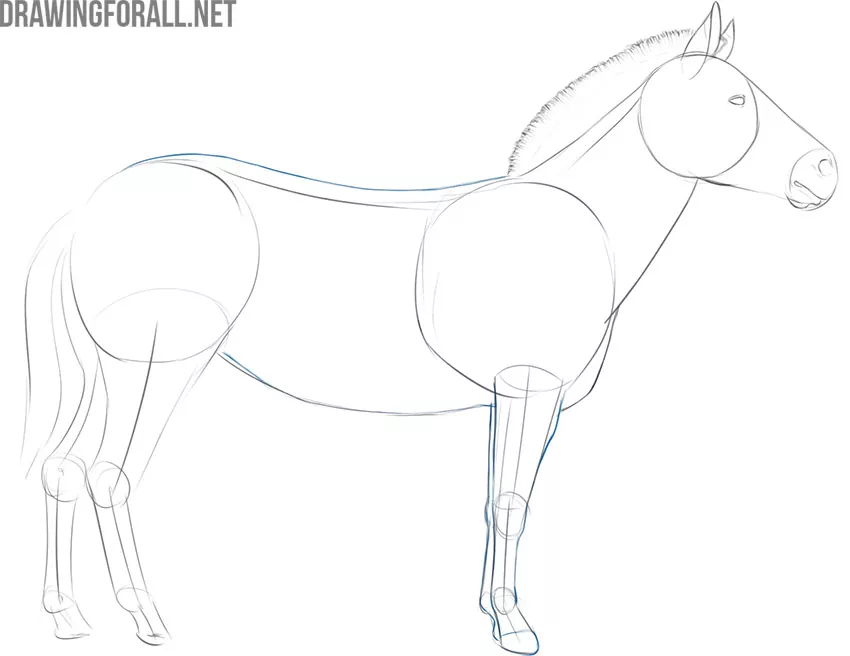
Step 8
Move to the back of the zebra and give the hind legs a more finished look. Using a few long and smooth lines, draw the texture of the hair on the zebra’s tail. Recall that you can check your drawn zebra for correctness and proportionality by looking at it in the mirror.
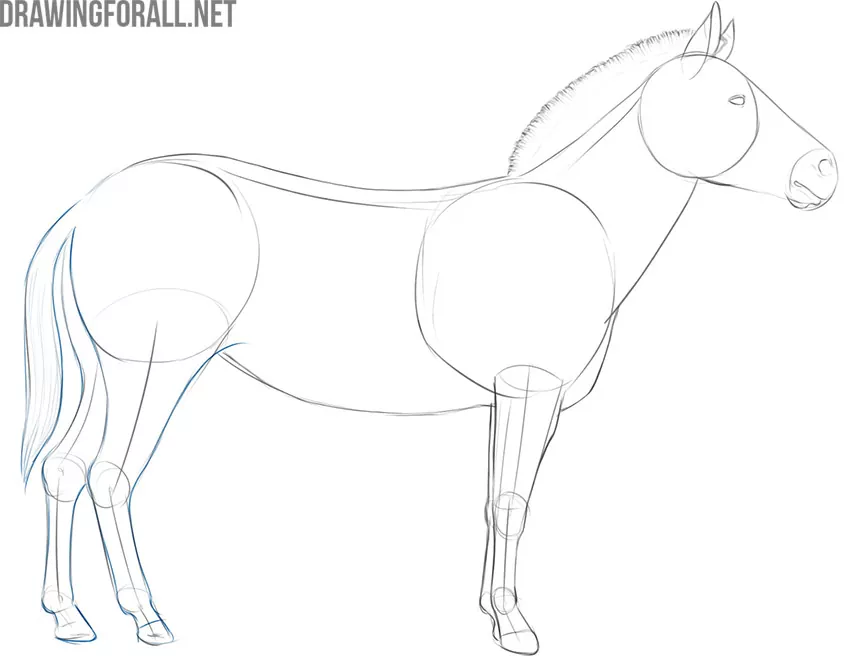
Step 9
Erase all the construction lines drawn in the beginning. Try not to touch important lines. Compare your zebra drawing with our example to see if there were any mistakes.
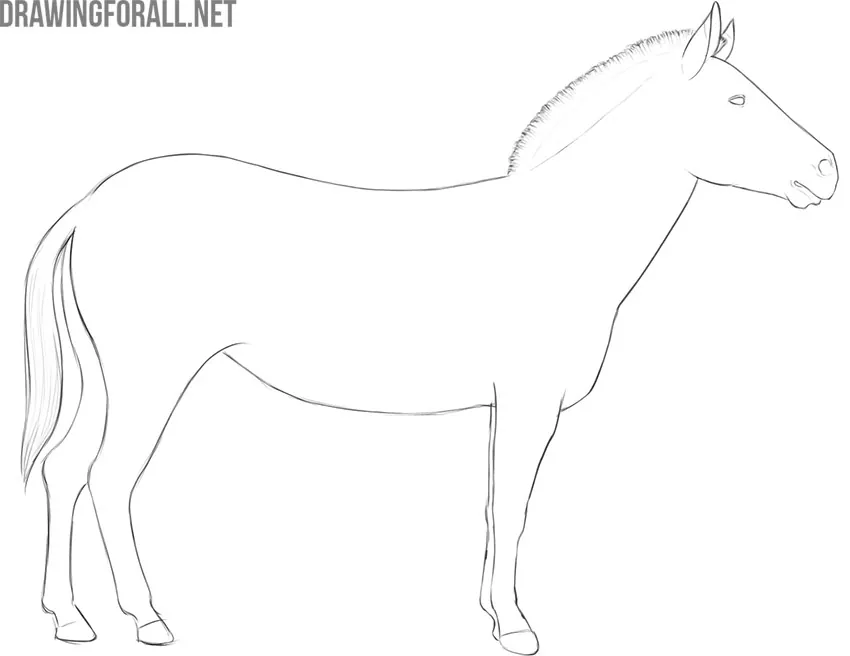
Step 10
Draw a pattern on the zebra’s body. To do this, use smooth, long lines. Keep in mind that the pattern on the face and legs is noticeably smaller than on the torso. Keep in mind that these patterns should be drawn taking into account the curves on the zebra’s body so that the drawing itself acquires additional volume.
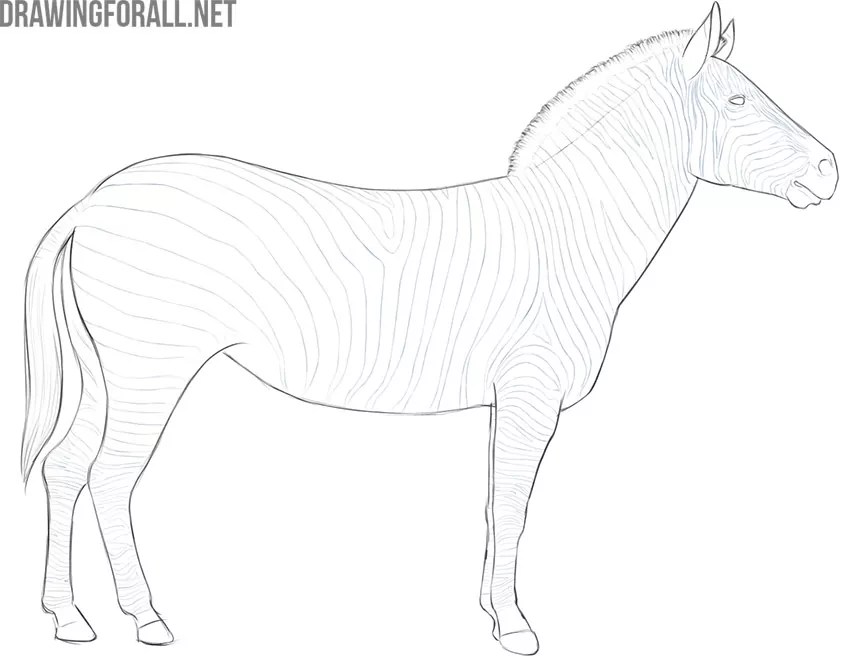
Step 11
Use hatching to darken the stripes of the pattern, as shown in our example. Don’t forget to darken the tips of the ears, the top of the mane, the end of the muzzle, and the hooves with hatching. Darken the eye, leaving a small white highlight. Use long and smooth lines to darken the zebra’s tail.
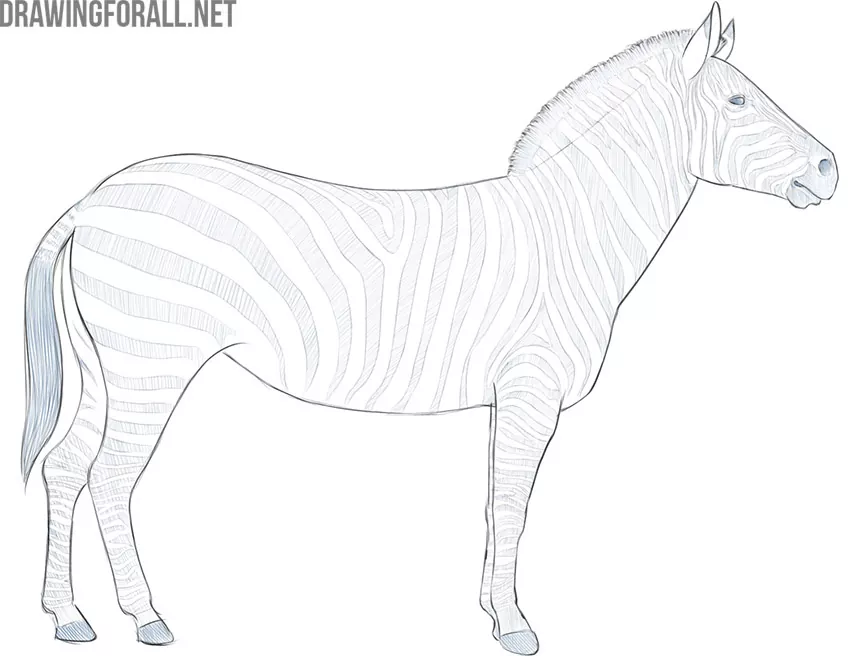
Step 12
Now using more accurate hatching draw the shadows. In our article on light and shadow, we talked in detail about the theory of shadows and how to draw them. Correctly drawn shadows will make your zebra drawing look much more voluminous.

Now is the time to learn how to consolidate the knowledge gained in this zebra drawing lesson.
Try to draw a zebra in a different pose or from a different perspective. Also, try to draw more complex shadows. This will complicate your task somewhat, which will help consolidate your skills.


